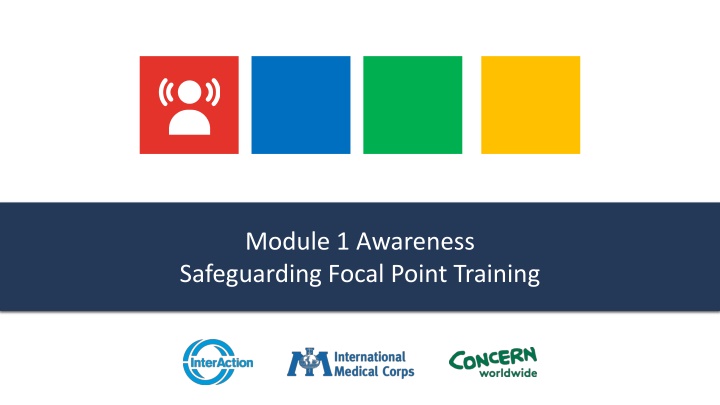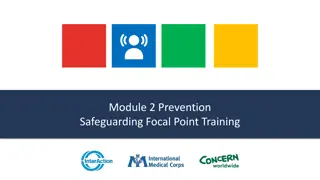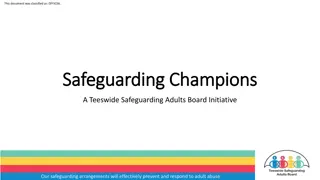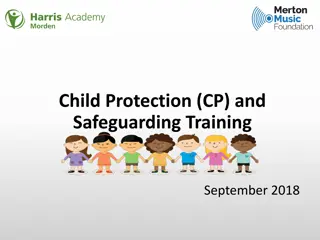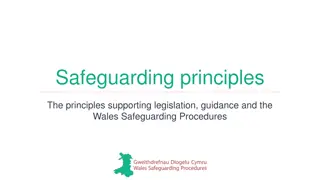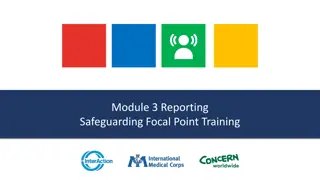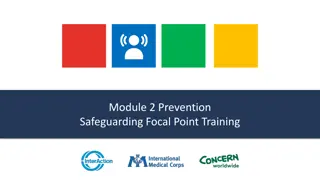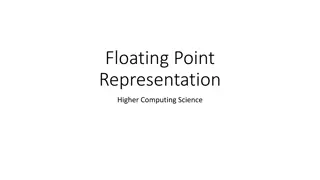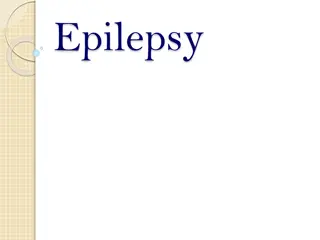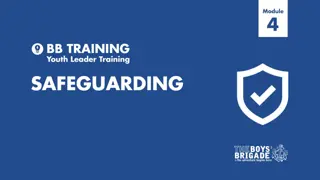Safeguarding Focal Point Training Overview
This training aims to equip Safeguarding Focal Points with the knowledge and skills to recognize indicators of safeguarding violations, understand organizational frameworks, and support safeguarding workplans. Sessions cover topics like recognizing harm, safeguarding scenarios, and optional videos on child safeguarding. Training emphasizes the prevention of harm in humanitarian and development contexts.
Download Presentation

Please find below an Image/Link to download the presentation.
The content on the website is provided AS IS for your information and personal use only. It may not be sold, licensed, or shared on other websites without obtaining consent from the author.If you encounter any issues during the download, it is possible that the publisher has removed the file from their server.
You are allowed to download the files provided on this website for personal or commercial use, subject to the condition that they are used lawfully. All files are the property of their respective owners.
The content on the website is provided AS IS for your information and personal use only. It may not be sold, licensed, or shared on other websites without obtaining consent from the author.
E N D
Presentation Transcript
Module 1 Awareness Safeguarding Focal Point Training
Learning Outcomes SFPs will be able to: Recognize potential indicators of safeguarding violations, including different types of harm, and local safeguarding priorities Understand how safeguarding work is framed in their organization(s), and the location/content of relevant policies Understand their role in organizational safeguarding and how to support associated workplans in their country offices/programs SFP Training
Session 0: Introduction SFP Training
Ground Rules Ensure you have your preferred name showing Please mute yourself while others are speaking Please keep your video on unless you have connection issues Please use the chat box / or raise hand when you have questions Only step away from training during assigned breaks Please participate as much as possible SFP Training
Rank in order of most to least powerful 5-year-old boy 30-year-old female Head of Office 43-year-old male livelihoods officer 22-year-old female head of household 13-year-old schoolgirl 70-year-old man who is blind SFP Training
Session 1: Recognizing Harm SFP Training
Safeguarding Scenarios What is the type of harm raised in this scenario? Who might be at risk from this type of harm? What can be done? [Additional optional question: Which policies/procedures do you need to follow?] SFP Training
Optional: Video Option 1: What if it were you? Option 2: Child safeguarding in emergencies SFP Training
Conclusions There are different types of harm that exist in humanitarian and development contexts. Some kinds of abuse and exploitation are a result of cultural practices in communities that are harmful, but others arise out of the actions or inactions of staff or organizations. A key responsibility is to prevent harm to those we work with. The organization should have policies and procedures to respond to and manage safeguarding concerns. SFP Training
Session 2: Contextualizing Safeguarding SFP Training
Review of Context Mapping Part 1: Risks and Protective Mechanisms Identify the most important point from each section (e.g. the section on what kinds of abuse exist in local communities) you would like to share with the group. Part 2: Policy Summary Identify one policy that exists within your organization that covers an element of safeguarding you would like to share with the group. SFP Training
Conclusions Safeguarding priorities will differ between and within countries, so it is important for SFPs to understand the context in which they are working. Organizations need to have policies and procedures in place to respond to and manage safeguarding concerns in a consistent way. Different organizations may address different elements of safeguarding in different policies. Focal points should know the location and content of the various policies, as well as the content owner responsible for updating those policies. SFP Training
Session 3: Roles and Responsibilities SFP Training
Roles and Responsibilities For each task, decide if that role/function is: R Responsible the person(s) responsible for implementation and completes the task or process A Accountable the person held accountable if the task or process is not completed; there would usually only be one accountable person I Informed the person informed once a decision has been made SFP Training
Conclusions All staff have a role and responsibility in safeguarding, but there are certain responsibilities that lie with SFPs. The Focal Point designation is a role or hat assigned to existing personnel and not a full-time position, so it is important to respect the need to balance the SFP s regular job with meaningful engagement on Safeguarding. SFPs are typically chosen because of their personal as well as professional attributes they are trusted individuals who are known to demonstrate care and compassion. The nomination of an SFP does not relieve the Head of Office as ultimately responsible for Safeguarding in his/her office but supports the Head of Office to fulfill that responsibility. SFP Training
Session 4: Additional Sessions SFP Training
Online Assignment | Option 1 Key Messages Group 1: 1. Who are the different groups of staff you want to target (e.g. staff, volunteers, contractors)? 2. What key messages/information do you need to share? [brief summary] 3. How will you share these key messages with staff? 4. Additional: what useful internal or external resources can you draw on? Group 2: 1. Who are the different groups within communities you want to target (e.g. women, children, persons with disabilities)? 2. What key messages/information do you need to share? [brief summary] 3. How will you share the key messages with the community? 4. Additional: what useful internal or external resources can you draw on? SFP Training
Wrap-up There are different types of harm that can arise in our work due to imbalances of power between organizations, staff, and communities where we work. Safeguarding is underpinned by international standards, should adhere to local laws, and should address the risks that are prevalent in that context. Organizations may have various policies relating to different aspects of safeguarding that are central to guiding the work of SFPs. Focal points play a key role through supporting the development and implementation of safeguarding work plans in their country office(s)/program(s). SFP Training
